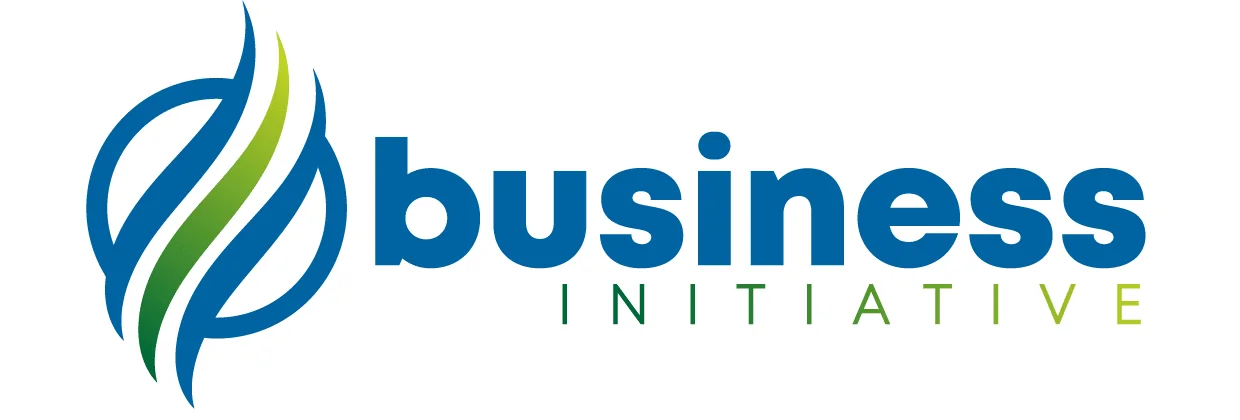The insurance industry is a massive, complex, and often confusing landscape for consumers, where false advertising in insurance can mislead even the most careful buyers.
In the pursuit of gaining new customers, many insurance companies have resorted to using misleading or downright false advertising claims, which is an example of false advertising in insurance that violates regulations.
 Key Takeaways
Key Takeaways
- False savings claims: Be cautious of exaggerated savings promises in ads, as actual savings may vary significantly based on individual circumstances.
- Misleading rate comparisons: Insurance companies often cherry-pick data to make their rates seem more competitive; always compare multiple quotes from different providers.
- Overhyped coverage benefits: Some ads may overstate the extent of coverage offered; carefully review policy details and exclusions before purchasing.
- Bundling misconceptions: While bundling insurance policies can lead to discounts, it doesn't guarantee the best overall value or coverage; evaluate each policy individually.
- Omission of hidden fees: Ads may not disclose additional costs like deductibles or surcharges; ask for a clear breakdown of all charges before signing up for a policy.
In this article, we will dissect some of the biggest lies found in new insurance industry ads and provide accurate information to help you make informed decisions, exposing the act of an insurance company publishing misleading information.
1. “Save up to 15% on car insurance!”
The truth: Your savings may vary
Insurance companies love to tout the savings they can offer customers, but these savings are not guaranteed, representing a common form of false advertising in insurance.
In reality, the savings you receive will depend on a variety of factors, such as your driving record, location, and the type of coverage you choose.
It’s essential to shop around and compare quotes from multiple providers to ensure you’re getting the best deal, avoiding the lies in advertising that can cost you money.
- A Consumer Reports survey found that 71% of respondents who switched car insurers in the past five years saved money.
2. “No medical exam required for life insurance!”
The truth: Limited coverage and higher premiums
While it’s true that some life insurance policies don’t require a medical exam, these policies generally offer lower coverage amounts and come with higher premiums, which may not be included in an insurance company’s advertisement.
Insurers take on a higher risk by not requiring an exam, so they compensate by charging more for these policies.
If you’re in good health, it’s worth considering a policy that requires a medical exam for better coverage and lower premiums.
- No-exam life insurance policies typically offer coverage amounts between $50,000 and $500,000, whereas policies that require an exam can offer coverage of $1 million or more.
- Premiums for no-exam policies can be up to 20% higher than those for policies requiring a medical exam.
3. “Bundle your insurance and save!”
The truth: Bundling isn’t always the best option
Bundling multiple insurance policies (e.g., home and auto) with the same provider can lead to some savings, but this benefit may not be included in an insurance company advertisement as clearly as it should be.
However, it’s not always the best option for everyone. Depending on your unique circumstances, you might find better deals by getting separate policies from different providers.
Always compare the costs of bundled and separate policies to determine which option is best for you.
4. “Lower your deductible for a small increase in premium!”
The truth: Higher premiums may not be worth the trade-off
A lower deductible might seem like an attractive option, as it reduces your out-of-pocket expenses in the event of a claim. However, this often comes at the cost of higher premiums, and deductibles are a cost of insurance that should be clearly explained.
It’s crucial to weigh the potential savings from a lower deductible against the increased premiums you’ll pay over the life of your policy.
In many cases, choosing a higher deductible with lower premiums can save you more in the long run.
5. “Guaranteed acceptance for all applicants!”
The truth: Limited coverage and exclusions may apply
Guaranteed acceptance policies can be appealing, especially for those who have been denied coverage in the past, but this is an example of false advertising in insurance when limitations aren’t clearly disclosed.
However, these policies often come with limited coverage, higher premiums, and specific exclusions.
Before signing up for a guaranteed acceptance policy, it’s essential to carefully review the terms and conditions to ensure you’re getting adequate coverage.
- Guaranteed issue life insurance policies typically have a graded death benefit, which means the full payout is not available until the policy has been in force for a certain number of years (usually two or three).
6. “Switching insurance providers is a hassle!”
The truth: It’s easier than you think
Many insurance companies try to scare consumers into staying with their current provider by claiming that switching is a complicated and time-consuming process, which is the act of an insurance company publishing misleading information.
In reality, switching insurance providers can be relatively straightforward and even save you money.
Don’t let fear of the unknown keep you from exploring better options for your insurance needs.
7. “Accident forgiveness for all customers!”
The truth: Restrictions and eligibility requirements apply
While accident forgiveness may be advertised as a standard feature, it’s often only available to specific customers who meet certain criteria, which may not be included in an insurance company’s advertisement.
These can include maintaining a clean driving record for a set number of years or being enrolled in higher-tier insurance plans.
It’s important to review your policy and understand the exact conditions required to qualify for accident forgiveness.
8. “New car replacement coverage at no extra cost!”
The truth: Limited availability and additional costs may apply
While new car replacement coverage can be an attractive feature, it’s not always offered at no extra cost, representing false advertising in insurance when costs are hidden.
Some insurers may charge additional premiums for this coverage, while others may require you to purchase comprehensive and collision coverage first.
Be sure to read the fine print and fully understand the conditions and costs associated with new car replacement before signing up.
9. “Get a discount just for being a safe driver!”
The truth: Usage-based programs and monitoring may be required
While safe driver discounts are indeed offered by many insurers, they often require enrollment in usage-based insurance programs that monitor your driving habits, which may not be included in an insurance company advertisement.
These programs may use telematics devices or smartphone apps to track data such as speed, braking, and mileage.
If you’re uncomfortable with this level of monitoring, these discounts may not be the best fit for you.
10. “Roadside assistance is included with every policy!”
The truth: Optional add-on or separate membership required
Some insurers may advertise roadside assistance as an included benefit when it’s actually an optional add-on service or requires a separate membership, which is an example of false advertising in insurance.
Roadside assistance coverage can vary greatly among providers and may have limitations on service calls or distance.
Make sure to understand the terms and costs associated with roadside assistance before assuming it’s included in your policy.
- According to a AAA study, the average cost of a single roadside assistance event ranges from $50 to $200, depending on the service required and whether or not it’s covered by your insurance policy or membership.
11. “Pay-per-mile insurance means you only pay for the miles you drive!”
The truth: Base rates and potential fees still apply
While pay-per-mile insurance can be a cost-effective option for low-mileage drivers, it’s important to understand that a base rate is still charged, regardless of how many miles you drive, which may not be included in an insurance company advertisement.
Additionally, some providers may charge fees for canceling the policy or exceeding a certain number of miles per day.
Be sure to read the fine print and calculate your potential costs before choosing this type of coverage.
12. “Get a multi-car discount with no restrictions!”
The truth: Eligibility requirements and limitations apply
While multi-car discounts can help save money for households with multiple vehicles, insurers often have specific eligibility requirements and limitations, which may not be included in an insurance company advertisement.
These may include restrictions on the types of vehicles covered or the maximum number of cars that can be insured under one policy.
Make sure to review the terms and conditions associated with any multi-car discounts offered to ensure you fully understand the savings potential.
- According to a study by Consumer Reports, bundling auto insurance policies for multiple vehicles can save drivers an average of 11% on their premiums.
13. “No referrals needed for specialist visits!”
The truth: Network restrictions and limitations may apply
While some health insurance plans claim that you don’t need a referral to see a specialist, there may still be network restrictions or limitations on the types of specialists you can visit without a referral, which may not be included in an insurance company advertisement.
It’s important to review your plan’s details to understand any conditions or requirements associated with specialist visits.
- A report by the Kaiser Family Foundation found that 23% of large employer-sponsored health plans require a referral to see a specialist.
14. “Zero copayments on all preventive care services!”
The truth: Coverage varies by service and plan
While many health insurance plans offer zero copayments for preventive care services, the specific services covered and the extent of coverage can vary depending on your plan, which may not be included in an insurance company advertisement.
Always review your policy to understand which preventive services are included and any associated costs or limitations.
15. “No waiting period for pre-existing conditions!”
The truth: Waiting periods may still apply in some cases
While the Affordable Care Act (ACA) prohibits insurers from denying coverage or charging higher premiums due to pre-existing conditions, waiting periods may still apply in certain situations, such as short-term health plans or dental and vision insurance, and the waiting period for a pre existing condition may not be clearly explained.
Be sure to review the specifics of your policy regarding pre-existing conditions and any applicable waiting periods.
16. “Unlimited prescription drug coverage!”
The truth: Coverage limits and tiered pricing may apply
While some health insurance plans may advertise unlimited prescription drug coverage, there are often limitations on the types of drugs covered and the associated costs, which may not be included in an insurance company advertisement.
Many plans utilize tiered pricing, which assigns different cost-sharing levels to various medications.
Make sure to review your plan’s formulary and understand any coverage limits or restrictions.
- According to a study by the RAND Corporation, about 14% of adults with employer-sponsored health insurance had access to a fitness center discount or reimbursement in 2018.
17. “No out-of-pocket maximum for medical expenses!”
The truth: Out-of-pocket maximums typically apply
The Affordable Care Act (ACA) requires most health insurance plans to include an annual out-of-pocket maximum for covered services, which may not be included in an insurance company advertisement.
This means that there is a limit on how much you’ll pay each year before your plan starts covering 100% of your expenses.
Be cautious of any claims stating no out-of-pocket maximums, as this may not be in compliance with the ACA or may only apply to specific services.
18. “Free gym memberships for all members!”
The truth: Program eligibility and restrictions may apply
While some health insurance plans offer free or discounted gym memberships as part of their wellness programs, these benefits may be subject to eligibility requirements or limitations, which may not be included in an insurance company advertisement.
Be sure to review your plan’s wellness program details to understand any restrictions or conditions associated with gym membership benefits.
19. “Telehealth services are always covered!”
The truth: Coverage varies by plan and provider
Telehealth services have become increasingly popular due to their convenience and accessibility, but coverage details may not be included in an insurance company advertisement.
However, coverage for these services can vary depending on your insurance plan and the specific telehealth provider.
Make sure to review your policy details regarding telehealth coverage before assuming it’s included in your plan.
- A report by the Kaiser Family Foundation found that in 2020, the average out-of-pocket maximum for an individual enrolled in an employer-sponsored health plan was $4,578.
In Summary…
Insurance industry ads are designed to grab your attention and make bold claims, but it’s essential to look beyond the surface and understand the truth behind these marketing tactics, including the lies in advertising that can mislead consumers.
By staying informed and doing your research, you can avoid falling for these lies and make better decisions when choosing insurance coverage, protecting yourself from false advertising in insurance.
Remember, knowledge is power when it comes to protecting yourself and your finances.
Don’t let insurance myths cloud your judgment!
Schedule a consultation call with our knowledgeable team at Business Initiative to get personalized advice and guidance.
We’ll help you navigate the complexities of insurance coverage and debunk any misconceptions you may have.
Schedule your contulatation call today!
Stay informed and up-to-date on the latest in business by subscribing to our monthly newsletter.
You’ll receive expert insights, tips, and valuable resources straight to your inbox.
Join the conversation as we continue to demystify the world of insurance together.
For real-time updates and industry highlights, follow us on X (Twitter)Tweet to @BisInitiative.


